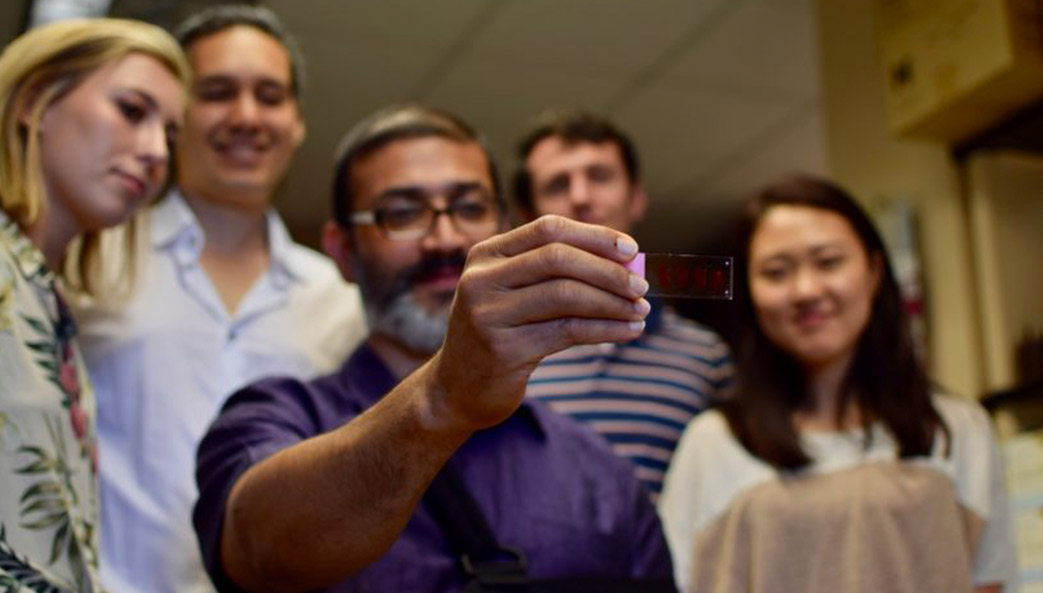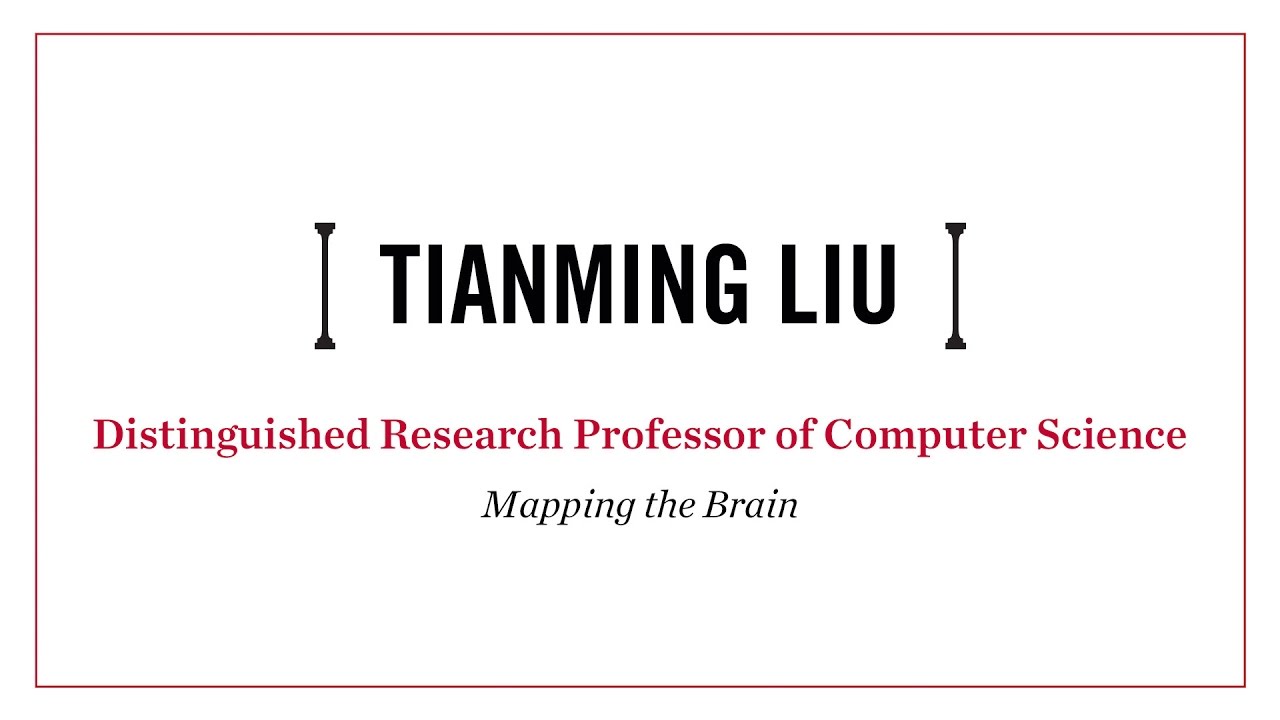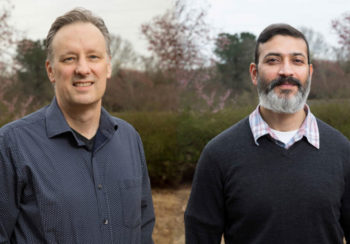Researchers in UGA’s Regenerative Bioscience Center have succeeded in reproducing the effects of traumatic brain injury and stimulating recovery in neuron cells grown in a petri dish. This makes them the first known scientific team in the country to do so using stem cell-derived neurons.
Unlike other cells in the body, most neurons in the central nervous system cannot repair or renew themselves. Using an agent called glutamate that is released in high amounts in the brain after traumatic injury, the research team recorded a concussion-like disruption of neural activity in a dish containing dozens of minute electrodes. Through these recordings, they then evaluated the activity and influenced recovery by electrical stimulation.
“Once the neurons reach a certain level of density in the dish, you begin to see what we call synchronous activity in a very timed manner,” says lead author Lohitash Karumbaiah, assistant professor in the College of Agricultural and Environmental Sciences. “Knowing we could re-create synchronized, brain-like activity in a dish gave us the impetus to ask, ‘What if we disrupt this rhythm, and how can we recover from something like that?’”
In 2015, the U.S. Food and Drug Administration approved the first deep-brain stimulation device—an electrical stimulation cap that patients wear continuously—for treatment of Parkinson’s disease. Karumbaiah and his team hope that electrical stimulation could be a clinically translatable approach for recovery from traumatic brain injury, or TBI.
Such treatments could be highly beneficial, for example, to veterans. Many veterans suffer from TBIs incurred through shock waves from explosions, with no physical focal point of injury. “Drilling into the brain randomly to access tissue in such cases makes no sense,” says Karumbaiah. “A wearable device that can administer fairly controlled levels of relevant electrical stimulation can help these patients.”
One of Karumbaiah’s co-authors is Maysam Ghovanloo, professor at the Georgia Institute of Technology. Ghovanloo has developed technologies for neural interfacing and implantable medical devices, and he will put his expertise to work in developing devices for the team’s pre-clinical studies.
“We have developed a unique approach for observing and guiding stimulatory patterns in the brain at multiple levels, all the way from individual neurons to the neural tissue, and eventually the entire brain,” Ghovanloo says.
The team’s research was published in Nature Scientific Reports.
This story appeared in the fall 2018 issue of Research Magazine. The original press release is available at https://news.uga.edu/traumatic-brain-injury-recovery-via-petri-dish/.






